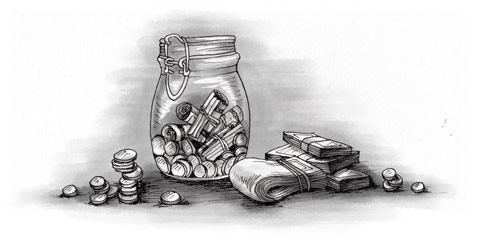It can be easy to overlook one of the most crucial aspects of the overseas property buying process; making overseas property payments! Knowing how to pay for your overseas property can be as important as deciding which property to buy.
Transferring money to buy an overseas property
With around 390,000 Brits living in Spain, and 150,000 in France, it’s been a popular choice to migrate to Eurozone countries. With the pound falling against the euro, it’s important to ensure that you make overseas property payments as cost effective as possible. Sending vast sums of money, in excess of £100,000, requires a diligent approach to the sourcing of a cheap money transfer service.
Banks can be very expensive
The most important thing for potential overseas property buyers to understand is that using a high street bank is not the cheapest way to send money abroad. Banks tend to apply margins of up to 5% of the amount you transfer abroad.
What is the ‘margin’ associated with an international money transfer?
When you buy currency, the goal is to be offered an exchange rate as close to the real ‘mid-market exchange rate’ as possible. The exchange rate markup or ‘margin’ is the difference between the rate offered and the real exchange rate. This can be found very easily in most financial newspapers and business channels. When being offered a rate, always compare like for like with the ‘real exchange rate'.
Fees charged by foreign exchange companies
The marketing methods in the foreign exchange industry are not always transparent and sometimes companies offer fee-free or commission-free deals to attract their clients, but instead apply wide margins off the real rate of exchange. As a general rule of thumb, it is the margin rather than the fee that is the determinant of the value you receive in the transaction.
Don’t get fooled by fee-free deals, look at the amount of euros, dollars, yen, or Swiss francs that you’re actually getting for your money.
Compare non-bank foreign exchange specialists
The first step in the process of sending money abroad is choosing the right foreign exchange company. A good starting point is to compare money transfers using comparison sites. Don’t settle for the first deal you stumble across. Sites like MyCurrencyTransfer.com provide the opportunity to dynamically compare different providers and find the best value international money transfer deal.
Getting the timing right
Exchange rates fluctuate constantly to the extent that sending at the wrong time of the day or week could lose you a percentage point, or even more. Getting the timing right is key.
If you are in less of a rush to send your money then foreign exchange specialists can really help. These companies give you the ability to reserve currency for purchase at a later date, set limit orders, stop losses and a variety of other currency contracts to mitigate against the risk of adverse currency fluctuations.
Get the most out of your overseas property payment
To conclude, use a non-bank foreign exchange specialist to get the most bang for your buck. Avoid the banks and choose a regulated and reputable foreign exchange broker who will both take time to understand your requirements and offer much better-than-bank exchange rates.
You can compare regulated providers at MyCurrencyTransfer.com



